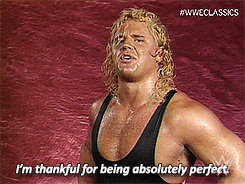Short Intro
In this article of the FirstDevRole series I want to share my knowledge about how to make a CV/Resume effective when preparing to apply for a developer role if you have no previous work experience in the IT field.
I will share a structure of what I think is good for a CV, what to include and what not to include.
Please note that the advice I will write has proven to be effective in my case but there are also other ways to do it.
General Things to Consider
These are some things that you should have in mind when creating your resume. Again, all of this based on my research and through trial and error.
- It would be the best if you tailor each resume to the job post you are applying to vs. having a "one size fits all" resume.
- Google about country specific rules regarding resumes - for example some countries prefer a more conservative design (black and white), some prefer colors. Google will give you an answer about that.
- File format should be PDF and text selectable. Reason is that some companies run your CV through an automatic "CV scanner" and depending on the result it decides if you can move forward. That automatic mechanism can only detect selectable text so don't make your resume an image.
Effective Structure
Below you can see the structure that I use for my personal resume which has proven to be very effective. It contains all crucial information on a single page which makes it easy for the reader to scan it in a short amount of time so I would highly suggest to use this structure.
Now that you gave the overall resume structure a look, I will continue with explaining what each section should contain and what not.
Header
The header should contain only your first name, last name and optionally your vocation.
If you have a logo then you can include that too.
Make the area clean and breathable by not stuffing anything else in there.
Side Content
Side content should be a narrower section of the resume on either side of the main content and it should contain the following:
Personal Information
Here is what to put here:
- Your geographical location (only the city and the country). Don't put your exact address here.
- Your contact email
- Contact phone number
- A link to your portfolio website and/or GitHub profile
Skills (programming languages)
After analyzing the job requirements put all relevant skills that you posses here. It's the best if you make a list of them one by one. Don't include any form of skill ratings because it doesn't tell much to the reader anyway and it could in some cases make you less desirable for the position.
People often ask me how to know which skills to include and which not. The answer is pretty simple. Include the skills that are listed in the job post PLUS all other skills that you consider yourself to be good at. That is, put any programming language that you used to create a project by yourself but don't put programming languages which you only used to create a Hello World application or just followed one tutorial.
Here is how to know if you are good at something or at a programming language to be precise. Ask yourself this question:
If someone gave me a random task to do in that programming language, would I be able to do it?
If the answer is yes then you are confident enough to list the language/skill to along with the required skills that you should obviously posses. If the answer is no, I would really think about if I should list it as a skill.
Languages
List your native language and other languages that you know.
Rate your level of proficiency for each listed language.
Main Content
This is the area where your content that takes more space should be located in.
Also notice the order of sections. I would suggest to keep this order that especially applies to the Summary section since that is your "pitch to sell yourself".
Summary
This section is in my opinion the most important section of your resume. It's the first section that your future employer/HR person will look at and decide if he/she should keep reading. Usually the time spend on looking at a resume is about 6 seconds before the reader decides if it's interesting enough to keep reading further.
Basically, in most cases if you don't "sell" yourself in the Summary section then the chances that the reader will keep on reading are quite low.
Having said that, let's see how we can make this important section as good as it can be.
The most important thing about the Summary section is to present yourself as someone whose skills have made an impact.
It is important to precisely say how the skill that you used to do something has been helpful. No fillers and no mumbo jumbo stuff allowed here.
The impact that you made should be measurable and concrete.
Maybe it's easier to get to the point if I give you a few examples:
"By utilizing my knowledge in Java I have build an application that helped speed up the process of preparing food in a local restaurant by 120%".
Here is a list of questions that you should ask yourself when writing the summary.
- What skills did I use?
- What measurable goal have I reached by doing so?
- Who has benefited from my skills and why?
Also, the best way to list your achievements is to make it a list and try to be as objective as possible.
Note that you don't need too many lines of text here but make sure that your message goes straight to the point.
Education
Put your most recent education level along with the name of the school and also if you have any related certificates or have attended a workshop/internship.
Projects
This section should contain a few of your BEST projects. Make sure to describe what is the point of your project, what technologies did you use and what have you learned from it. If it has made an impact to the society or environment also consider to include that. Put a link that leads the reader to the live application and a link to the GitHub repository of the project.
I will have a dedicated article in this series on how to make your GitHub profile better.
Work Experience
Include any work experience that you might have where you have gathered any experience that can be beneficial to the role you are applying to.
Make sure to list the position you worked as and a description on how working there has affected you. (in a positive way of course)
For example if you have been a restaurant worker in the USA, you can say that it has helped you improve your English language skills, work under pressure, communication skills and things like that.
Hobbies
This is a place where you can optionally put any hobbies that you might want your future employer to know about.
Don't say things like I code as a hobby or anything that might make you look to pushy about getting the job. Just be honest and try to make a personal contact with the reader.
Design Tips
- Use a readable font and avoid any cursive or overly styled fonts.
- Use a lot of whitespace and make sure that all gaps are even.
- Colors should be carefully used or avoided and the overall resume should have a good contrast between the text and background.
- Use left text alignment
- Don't include a photo of you if it's really not necessary. Depending on company's policies you might be disqualified right at the start if someone from the HR or whoever is looking at your CV doesn't like your appearance. Weird but true.
- Single page resume is the best if possible.
I hope that I have cleared some questions that you might have had about writing a resume for a developer position.
If you have any questions please feel free to comment or tweet to me!
If you found this article helpful or if you maybe got your first job because of it, you can support me here:
Thank you for reading!

![Cover image for 👨💻[FirstDevRole #3] How to Write an Effective CV/Resume for a Programmer Role if You Have No Work Experience](https://media2.dev.to/dynamic/image/width=1000,height=420,fit=cover,gravity=auto,format=auto/https%3A%2F%2Fdev-to-uploads.s3.amazonaws.com%2Fuploads%2Farticles%2Fuil05yvbomps0msd2rp8.png)





Top comments (0)